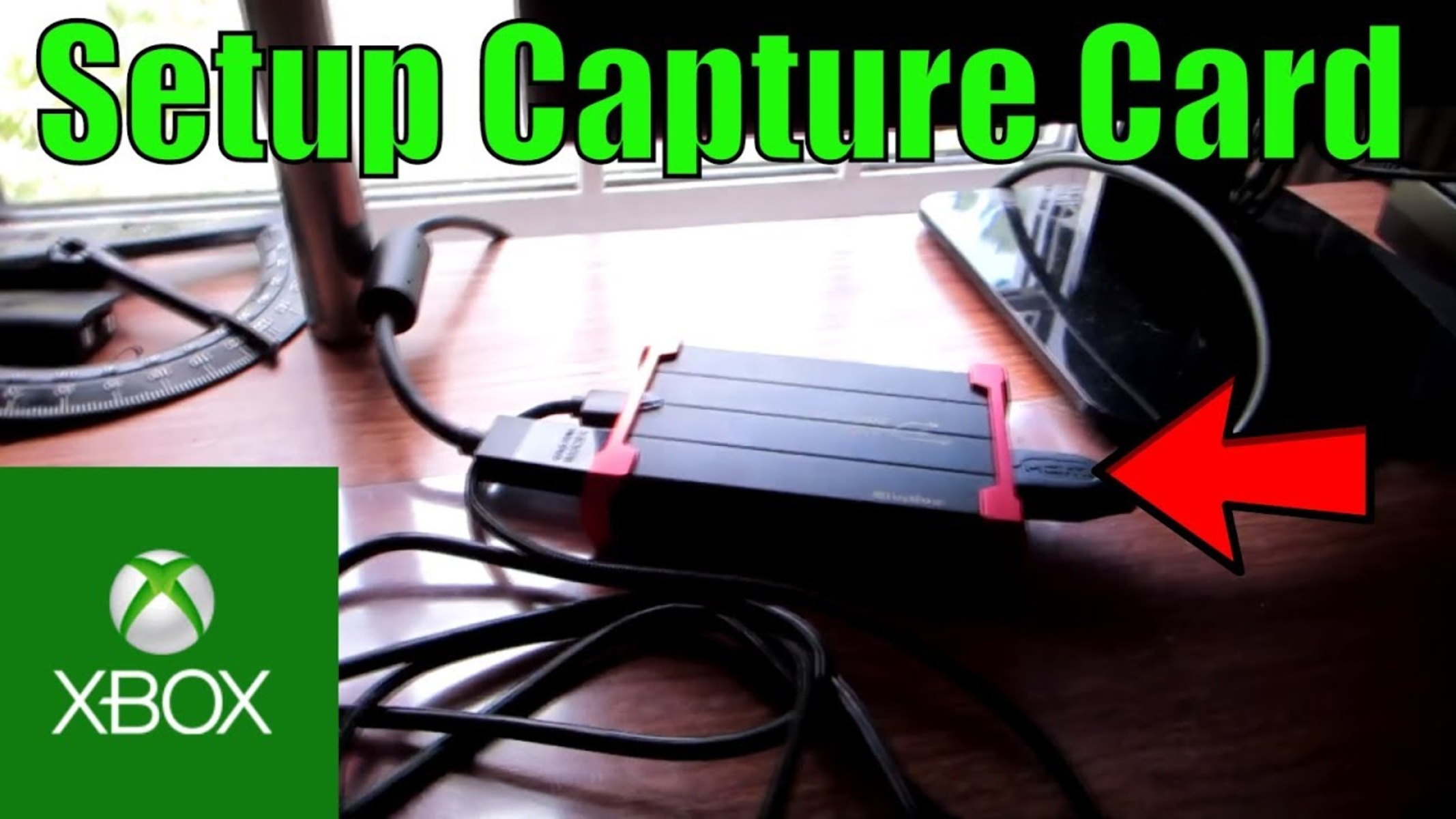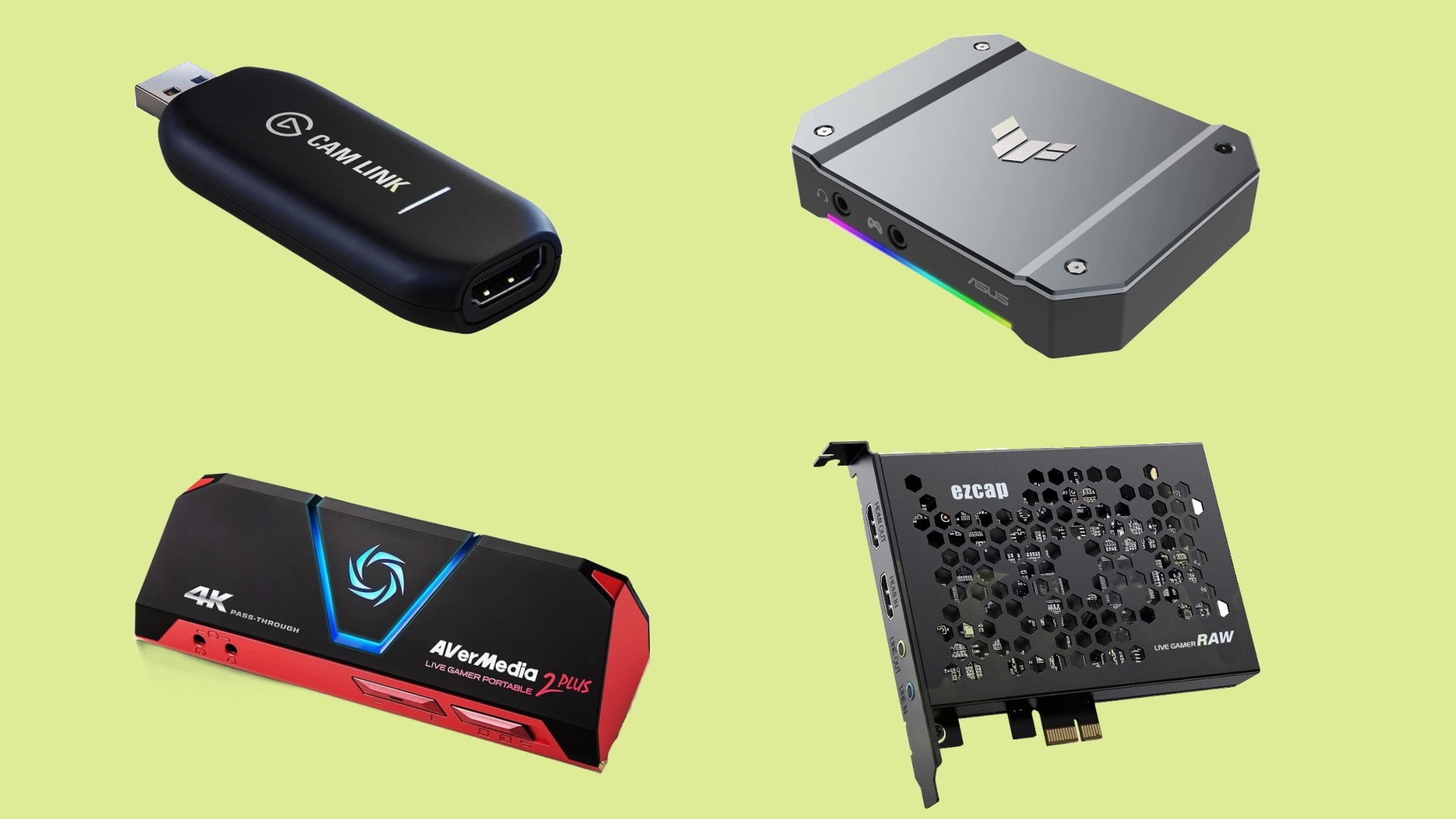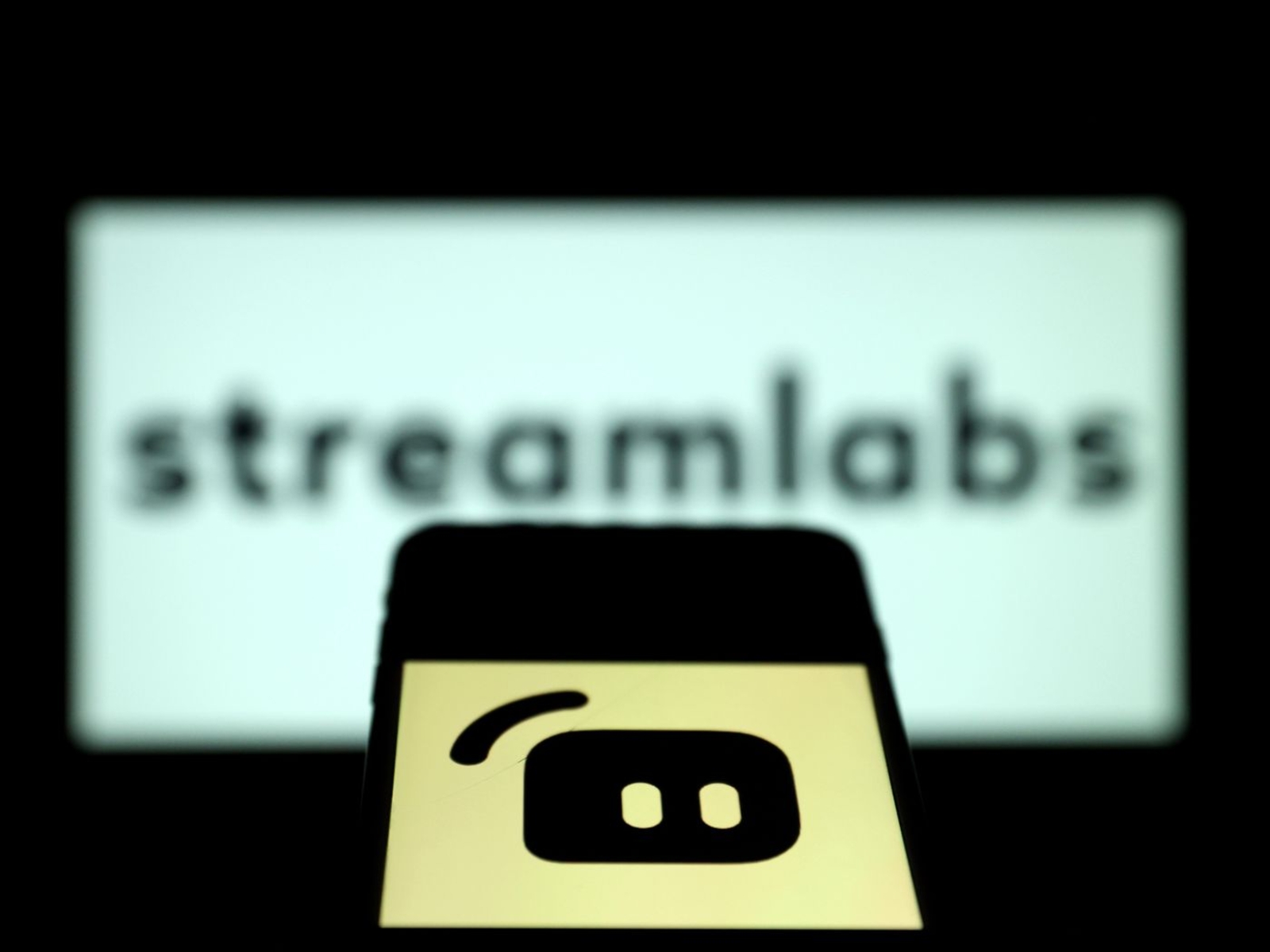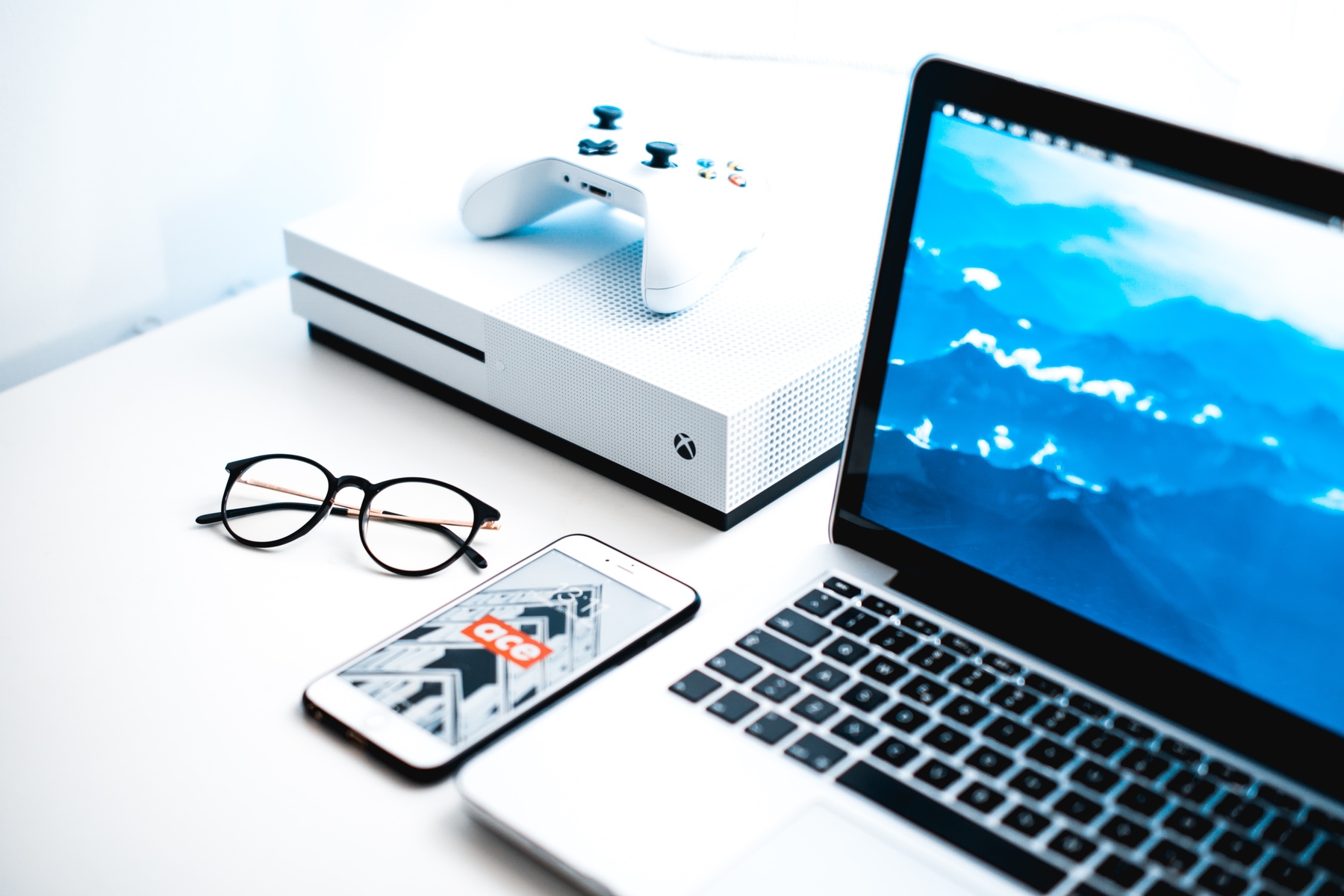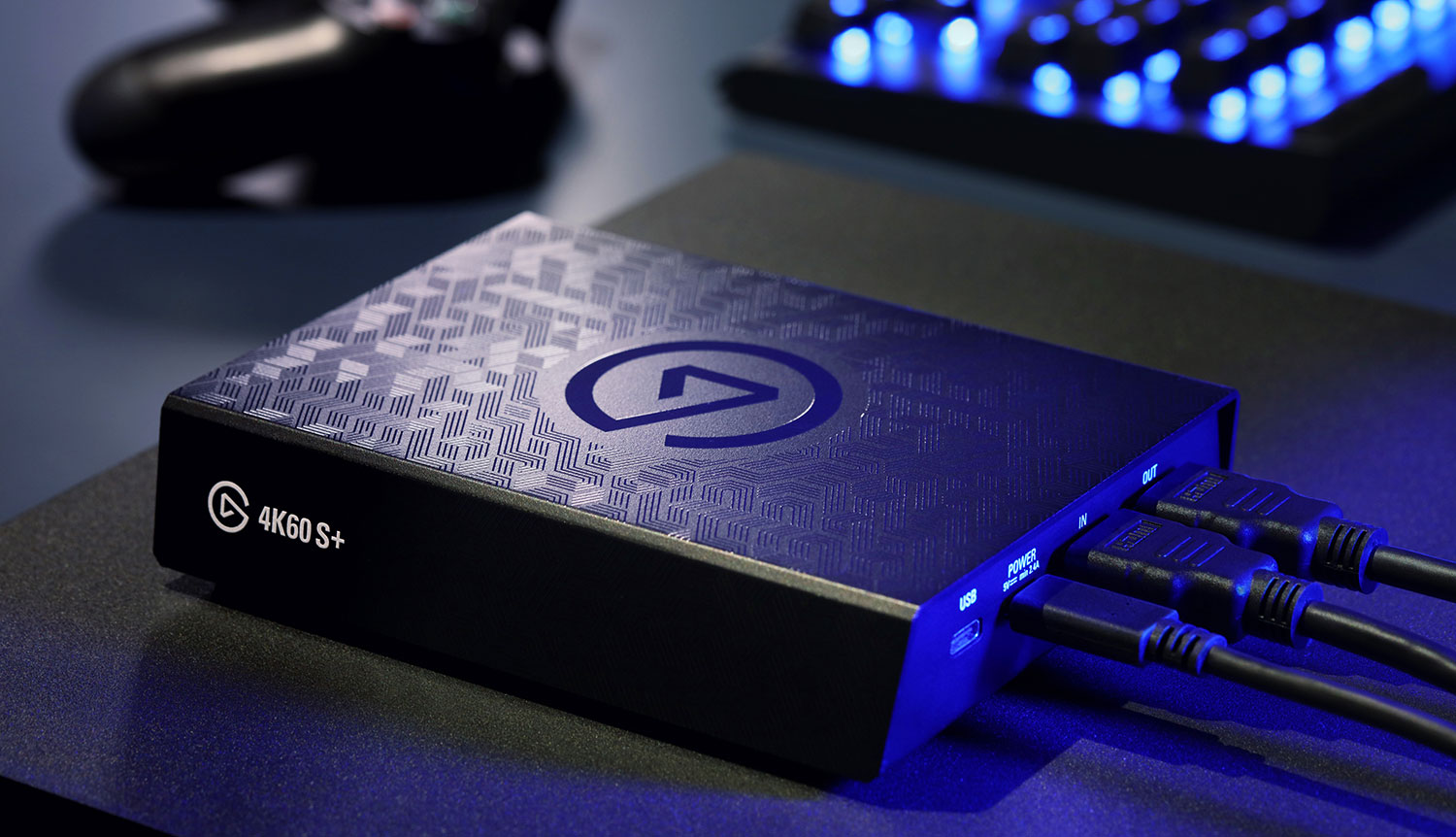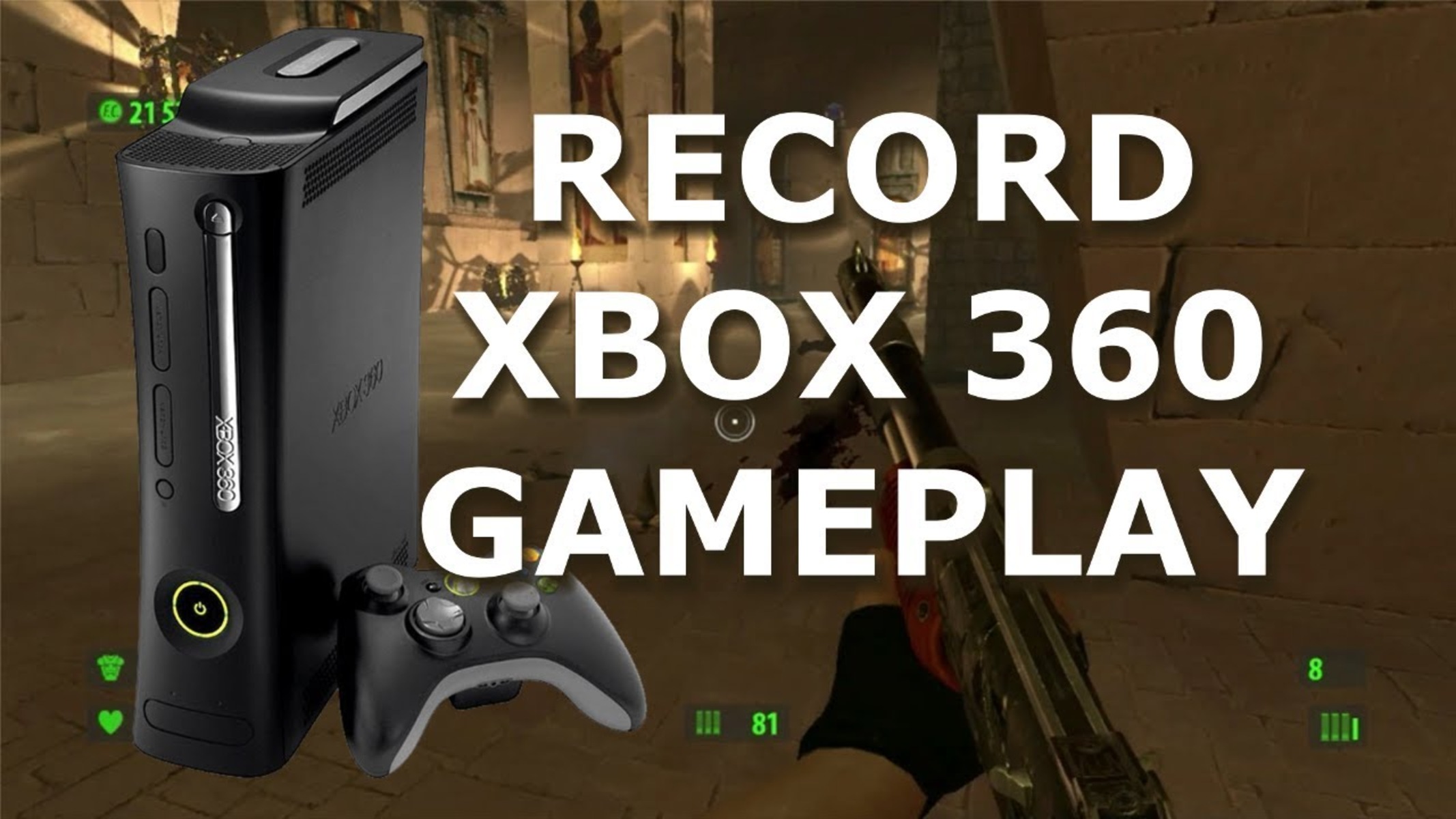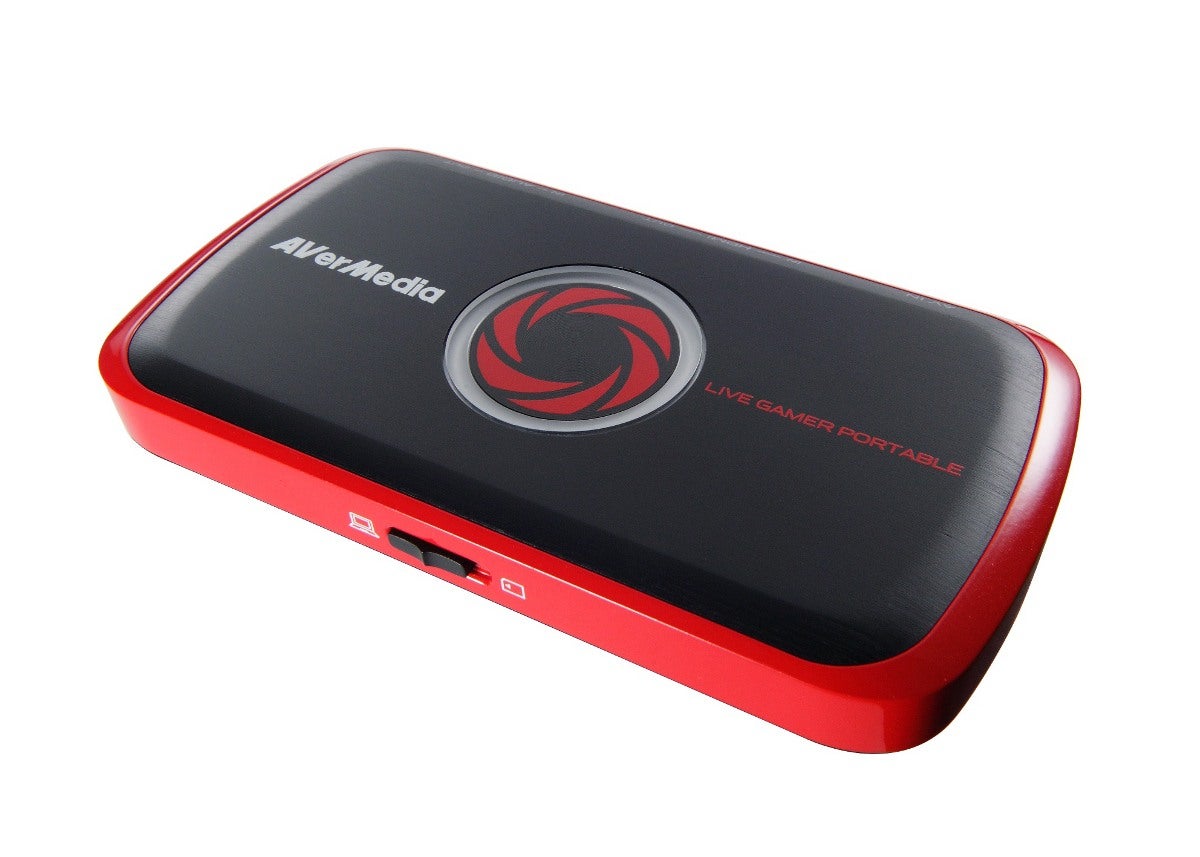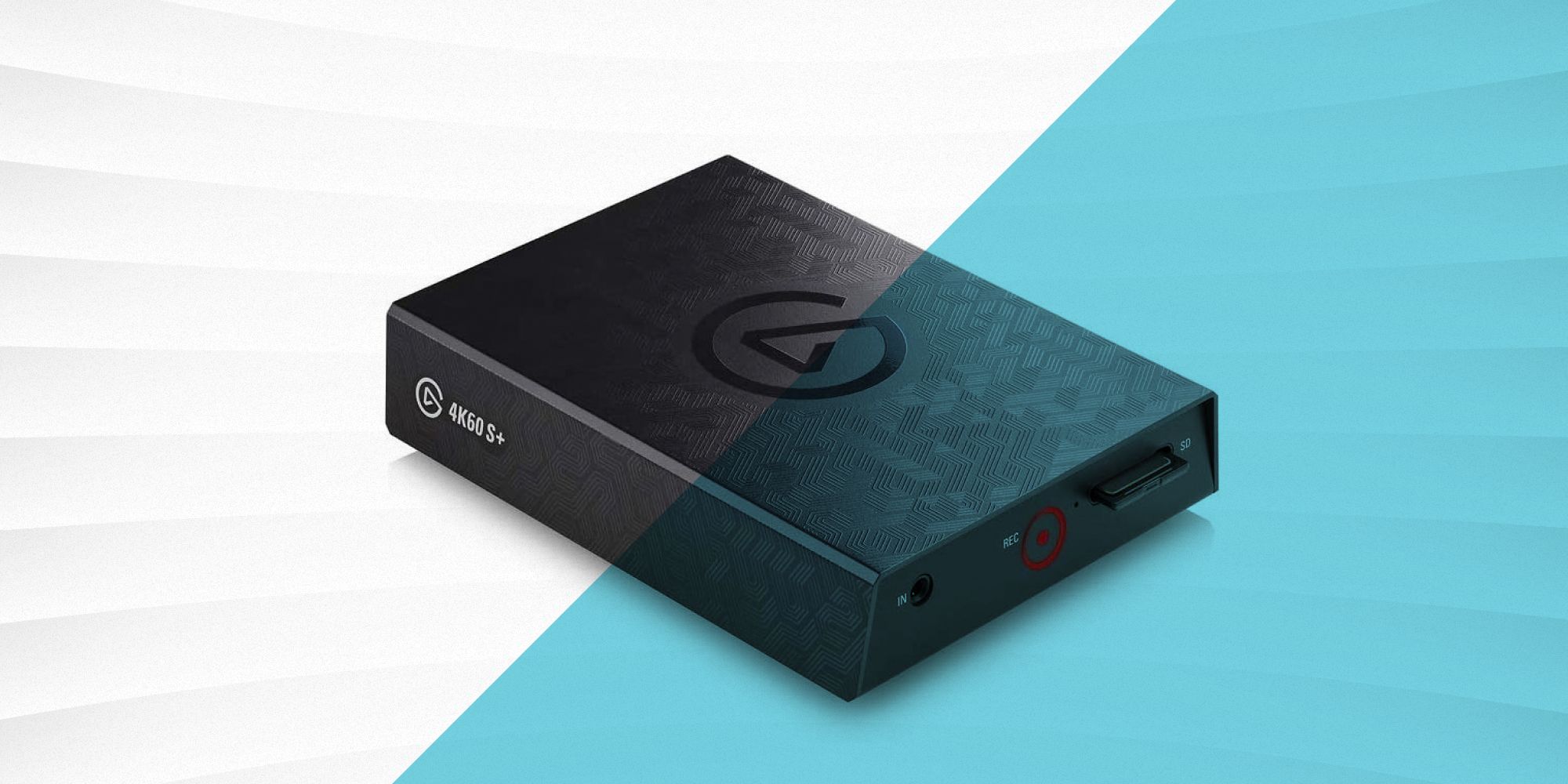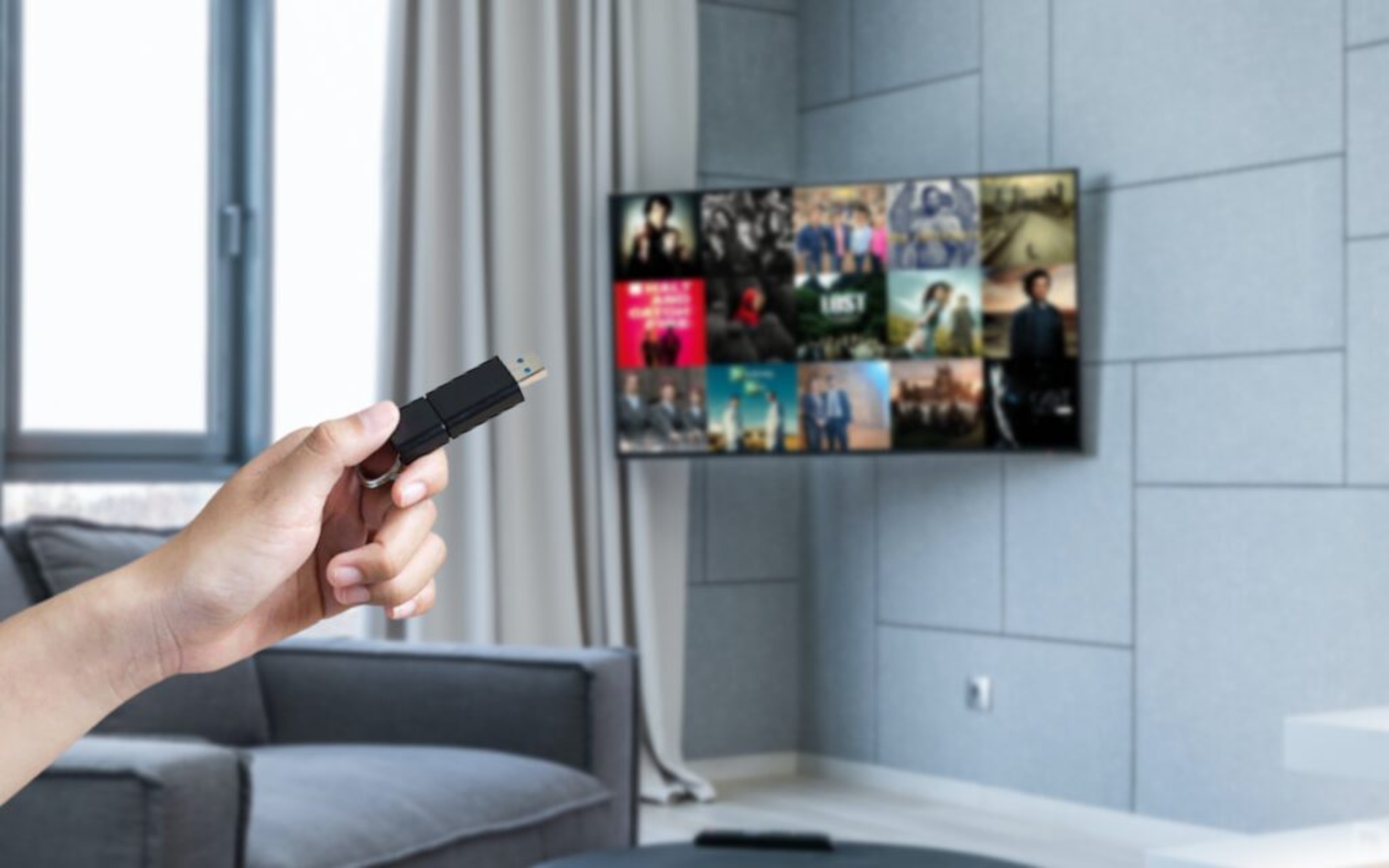What is a Capture Card?
A capture card is a device that allows you to capture, record, and stream gameplay from your Xbox One console to your computer or other external device. It essentially acts as a bridge between your console and your computer, allowing you to capture and manipulate the gameplay footage in real-time.
The capture card works by connecting to your Xbox One through an HDMI or component cable, and then connecting to your computer via USB or other means. It captures the video and audio signals from your console and transfers them to your computer, where you can use specialized software to record or stream the gameplay.
One of the main advantages of using a capture card is that it provides higher quality video and audio capture compared to other methods like screen recording or using built-in console capture features. Capture cards are designed to handle high-definition gameplay and can capture footage at higher resolutions and frame rates, resulting in crisp and smooth recordings.
In addition to capturing gameplay footage, some capture cards also allow for live streaming directly from your Xbox One to popular streaming platforms like Twitch or YouTube. This opens up opportunities for gamers to share their gameplay with others in real-time, interact with viewers, and even build a following.
Capture cards come in different shapes and sizes, with varying features and capabilities. From budget-friendly options to high-end professional-grade cards, there’s a capture card available for every level of gamer. The key is to choose one that suits your needs in terms of video quality, compatibility, ease of use, and additional features like built-in video editing or multi-platform support.
Overall, a capture card is an essential tool for gamers who want to showcase their gameplay, create content for YouTube or social media, or take their streaming career to the next level. By investing in a good capture card, you can elevate your gaming experience and share your skills and moments with a wider audience.
Why use a Capture Card for Xbox One?
Using a capture card for your Xbox One offers numerous benefits that can enhance your gaming experience and open up new possibilities. Here are some compelling reasons why you should consider using a capture card:
1. Higher Quality Gameplay Capture: Capture cards are specifically designed to capture high-definition gameplay footage with excellent video and audio quality. Unlike built-in console recording features or screen recording software, a capture card ensures that your recordings are crisp, clear, and free from any lag or frame drops.
2. Professional Streaming and Content Creation: If you’re serious about streaming your gameplay or creating gaming content for platforms like Twitch or YouTube, a capture card is a must-have tool. It allows you to live stream your gameplay with ease, offering viewers a more professional and polished experience.
3. More Control and Customization: Capture cards provide advanced settings and options to fine-tune your recordings and streams. You can adjust resolution, frame rate, bitrate, audio settings, and even add overlays or commentary to personalize your content and make it truly unique.
4. Multi-Platform Support: Many capture cards offer support for multiple gaming platforms, including Xbox One, PlayStation, and even PC. This allows you to capture and record gameplay from different consoles without needing multiple capture devices, making it a versatile solution for gamers who own multiple platforms.
5. Dedicated Hardware Encoding: Capture cards have built-in hardware encoding capabilities, which offloads the burden from your computer’s CPU. This ensures that your gameplay recordings and streams have minimal impact on your computer’s performance, allowing you to enjoy smooth gameplay while capturing and streaming simultaneously.
6. Share and Preserve Memorable Moments: A capture card allows you to capture and preserve your most epic gaming moments. Whether it’s a stunning killstreak, a game-winning play, or a hilarious glitch, you can easily save and share these memorable moments with your friends and followers.
7. Collaborate and Learn from Others: By using a capture card, you can collaborate with other gamers and content creators. You can record gameplay with friends, create tutorials or walkthroughs, and even analyze and learn from other players’ techniques to improve your own skills.
Overall, a capture card is not just a tool for recording gameplay—it’s a gateway to unlocking new opportunities in streaming, content creation, and community engagement. If you’re passionate about gaming and want to take your gaming experience to the next level, investing in a high-quality capture card is a wise decision.
Choosing the Right Capture Card
When it comes to choosing a capture card for your Xbox One, there are several factors to consider to ensure you select the right one for your needs and budget. Here are some key points to keep in mind:
1. Video Resolution and Frame Rate: Look for a capture card that supports the desired video resolution and frame rate you want to capture or stream at. Whether it’s 1080p at 60fps or 4K at 30fps, make sure the capture card can handle the level of quality you want.
2. Compatibility: Ensure that the capture card you choose is compatible with your Xbox One console. Most capture cards are designed for specific gaming platforms, so double-check the compatibility information provided by the manufacturer.
3. Connection Type: Consider the type of connections available on the capture card and ensure they match the available ports on your Xbox One. The most common connection types are HDMI and component, so make sure you have the necessary cables and ports for seamless connectivity.
4. Software Requirements: Take note of any software requirements for the capture card. Some cards come with dedicated software for capturing and streaming, while others may require you to use third-party software. Make sure the software is compatible with your operating system and offers the features you need.
5. Features and Additional Functionality: Consider any additional features or functionality that you may require. Some capture cards offer built-in video editing, live streaming capabilities, multi-platform support, or even the ability to add overlays and commentary. Assess your needs and choose a capture card that offers the desired features.
6. Budget: Set a budget for your capture card. Prices can vary extensively depending on the features, brand, and quality. Determine how much you are willing to spend and find a capture card that offers the best value for your investment.
7. User Reviews and Recommendations: Research capture cards online and read user reviews to get an idea of the performance, reliability, and user experience. Look for capture cards with positive reviews and recommendations from fellow gamers or content creators.
8. Support and Warranty: Check the manufacturer’s support options and warranty coverage for the capture card. Make sure you have access to reliable customer support and that the card is backed by a warranty in case of any issues or defects.
By considering these factors and doing thorough research, you can find the capture card that best suits your needs and offers the functionality and performance required to enhance your Xbox One gaming experience. Remember to compare different options, weigh the pros and cons, and make an informed decision based on your specific requirements.
Setting up Your Capture Card
Once you have chosen the right capture card for your Xbox One, it’s time to set it up and get it ready for capturing and recording your gameplay. Follow these steps to set up your capture card:
1. Read the Documentation: Start by carefully reading the user manual or documentation that came with your capture card. This will provide specific instructions and guidance on how to set up the device.
2. Prepare Your Equipment: Ensure that you have all the necessary equipment and cables. You will need an HDMI or component cable to connect your Xbox One to the capture card, and a USB cable or other connectivity option to connect the capture card to your computer.
3. Install any Required Software: If your capture card comes with dedicated software, install it on your computer. Follow the installation instructions provided by the manufacturer, and make sure your computer meets the software’s system requirements.
4. Connect Your Xbox One to the Capture Card: Connect the HDMI or component cable from your Xbox One’s output port to the input port on the capture card. Ensure that the cables are securely connected, and double-check that you have plugged them into the correct ports.
5. Connect the Capture Card to Your Computer: Connect the capture card to your computer using the provided USB cable or the appropriate connectivity option. Make sure the connection is secure and that your computer recognizes the capture card. Install any necessary drivers if prompted.
6. Configure Audio and Video Settings: Open the software associated with your capture card and configure the audio and video settings. Ensure that the audio is coming through the correct channels and that the video resolution and frame rate are set to your desired settings.
7. Test the Connection: Launch your console and check if the video and audio signals are being captured by the capture card. You should see the gameplay on your computer screen through the capture software. If not, double-check all the connections and settings.
8. Adjust and Fine-tune: Take some time to adjust and fine-tune the settings to achieve the best results. You can experiment with different recording or streaming settings, such as bitrate, encoding settings, or adding overlays to customize your videos.
9. Capture and Record Gameplay: Once everything is set up and configured to your liking, you are ready to start capturing and recording your gameplay. Launch your game, press the designated key or button to begin recording, and let the capture card do its magic.
Remember to regularly update your capture card’s firmware and software to ensure compatibility and access to the latest features and improvements. With your capture card properly set up, you can capture and share your gaming moments with ease and take your Xbox One gaming experience to new heights.
Connecting Your Xbox One to the Capture Card
Connecting your Xbox One console to the capture card is a crucial step in setting up your capturing and recording setup. Follow these steps to ensure a proper connection:
1. Gather the Necessary Cables: Make sure you have the required cables and adapters for the connection. Most capture cards use HDMI cables, so check if your Xbox One also has an HDMI output. If your capture card or Xbox One has different connection options, such as component cables, ensure you have the appropriate cables.
2. Power Off Your Xbox One: Before making any connections, it’s important to power off your Xbox One console. This will avoid any potential issues or disruptions during the setup process.
3. Connect the Xbox One to the Capture Card: Take the HDMI cable and connect one end to the HDMI output port on your Xbox One and the other end to the HDMI input port on your capture card. Ensure that the connection is secure on both ends.
4. Inspect the Capture Card Outputs: Check the output ports on your capture card. Some cards have HDMI or component video outputs, while others may have dedicated ports for specific purposes like streaming or recording. Take note of these outputs for future reference.
5. Connect the Capture Card to Your Display: Connect the HDMI or component cable from the output port of your capture card to the HDMI input on your display device. This could be a computer monitor or a TV that supports the desired resolution and frame rate of your gameplay.
6. Power On Your Xbox One and Display Device: Turn on your Xbox One console and your display device. It’s important to power on your devices in the correct sequence, as some capture cards may require specific timing for proper detection.
7. Check the Connection and Display Settings: On your display device, make sure the input source is set to the correct HDMI or component input where the capture card is connected. If needed, adjust the display settings on your Xbox One to match the desired resolution and output settings.
8. Test the Connection: Launch your game on the Xbox One and view the display on your connected display device. Ensure that the gameplay is visible and that the audio is working correctly. Check if your capture card is detecting and capturing the gameplay on your computer through the associated software.
9. Troubleshoot Connection Issues: If you encounter any issues with the connection, double-check all the cables and connections to ensure they are secure and properly inserted. Make sure you are using compatible cables and that they are not damaged or defective.
10. Fine-tune and Adjust: Once the connection is successfully established, you can fine-tune the audio and video settings on your capture card and associated software to achieve the desired recording or streaming quality.
By following these steps, you will have a solid and reliable connection between your Xbox One console and capture card, ensuring that your gameplay is captured and recorded smoothly and without any issues.
Installing Capture Software
After setting up your capture card hardware and connecting your Xbox One to it, the next step is to install the capture software on your computer. The capture software is what allows you to control and manage the recording or streaming process. Follow these steps to install the capture software:
1. Check the Included Software: If your capture card came with a software disc or a download link, start by checking the contents of the package. Look for any installation instructions or software recommendations provided by the manufacturer.
2. Download the Software: If you need to download the capture software, visit the manufacturer’s website or the designated download page and locate the appropriate software version for your operating system. Ensure that you select the correct software for your capture card model.
3. Run the Installer: Once the capture software file is downloaded, locate it on your computer and run the installer. Follow the on-screen instructions to proceed with the installation process. You may need to agree to the software’s terms and conditions and specify the installation location.
4. Configure Installation Settings: During the installation process, you may be presented with additional configuration options. These could include choosing the installation language, creating shortcuts, or specifying additional software components. Adjust these settings as desired and proceed with the installation.
5. Complete the Installation: Once all the necessary options and settings have been configured, click on the ‘Install’ or ‘Next’ button to begin the installation process. The installer will then copy the required files and components onto your computer.
6. Launch the Capture Software: After the installation is complete, you can usually find the capture software in your computer’s Start menu or desktop. Double-click on the software icon to launch it.
7. Update the Software: To ensure compatibility and access to the latest features, it’s recommended to check for any available updates for the capture software. Most software applications have an auto-update feature, or you can manually check for updates through the program’s settings or options menu.
8. Familiarize Yourself with the Software: Take some time to explore the capture software’s interface and features. Familiarize yourself with the various settings, options, and tools available. Refer to the software’s user manual or online documentation for detailed information and tutorials.
9. Connect Your Capture Card: Before you can start recording or streaming, make sure your capture card is connected to your computer and recognized by the capture software. Follow the specific instructions provided by the manufacturer to establish this connection.
10. Configure Capture Settings: Once your capture card is connected, you can configure the capture settings in the software. Adjust options like resolution, frame rate, bitrate, audio settings, and any other desired settings to achieve the desired recording or streaming quality.
By following these steps, you will successfully install the capture software and be ready to utilize your capture card for recording or streaming your Xbox One gameplay. Remember to periodically check for software updates and explore the various capabilities of the software to enhance your capturing experience.
Configuring the Capture Software
Once you have installed the capture software for your capture card, it’s essential to configure the settings effectively. This ensures optimal performance and allows you to customize your recording or streaming experience. Follow these steps to configure your capture software:
1. Open the Capture Software: Launch the capture software on your computer. You can usually find it in the Start menu, desktop, or system tray. Open the software and allow it to initialize.
2. Select Your Capture Card: In the software interface, look for an option to select or detect your capture card. This allows the software to recognize and communicate with your capture device. Choose the appropriate capture card from the list, or follow any recommended steps to establish the connection.
3. Set the Video Source: Determine the video source you want to capture from your Xbox One. This could be the entire screen, a specific window, or a defined region on your display. Choose the appropriate video source option in the software, and make sure it is correctly configured.
4. Adjust Video and Audio Settings: Access the video and audio settings within the capture software. Here, you can fine-tune various parameters such as resolution, frame rate, bitrate, audio volume, and audio sources. Customize these settings according to your preferences and the requirements of your recording or streaming platform.
5. Configure Format and Output Options: Determine the file format and output settings for your captured videos. Choose a compatible format that meets your needs, such as MP4 or AVI. Configure additional settings like file name conventions, output directory, and any other preferences provided by the software.
6. Adjust Recording or Streaming Preferences: Explore the software’s preferences or options menu to access additional recording or streaming preferences. Here, you can enable features like overlays, webcam integration, microphone settings, and hotkey configurations. Customize these options based on your desired workflow and personal preferences.
7. Test the Configuration: Before proceeding with actual recording or streaming, perform a test run to ensure the configuration is working correctly. Start capturing or streaming a short gameplay session and review the output. Check if the video and audio quality meets your expectations, and make adjustments as necessary.
8. Save and Apply Settings: Once you are satisfied with the configuration, save your settings within the capture software. This ensures that your preferred settings are applied every time you open the software, making your recording or streaming workflow more efficient.
9. Utilize Additional Features: Explore any additional features or tools offered by the capture software. This may include options for adding overlays, editing videos, or integrating with streaming platforms. Familiarize yourself with these features to enhance your captured content.
10. Keep Software and Drivers Updated: Regularly check for updates to both the capture software and the drivers for your capture card. Updating these components ensures compatibility with the latest operating systems, fixes bugs or glitches, and may introduce new features or improvements.
By properly configuring your capture software, you can ensure optimal performance and create high-quality recordings or streams of your Xbox One gameplay. Experiment with different settings and options to find the perfect setup for your capturing needs.
Adjusting Settings for Best Performance
To achieve the best performance when using a capture card for recording or streaming your Xbox One gameplay, it’s important to fine-tune and optimize certain settings. Here are some key settings you can adjust to maximize performance:
1. Resolution and Frame Rate: Consider the capabilities of your capture card and the capabilities of your computer when selecting the resolution and frame rate for recording or streaming. Higher resolutions and frame rates may require more processing power and bandwidth, so choose settings that strike a balance between quality and performance.
2. Bitrate: Adjust the bitrate setting to optimize the file size and quality of your recorded or streamed content. A higher bitrate will result in better quality but may require more bandwidth for streaming. Experiment with different bitrate settings to find the sweet spot that offers a good balance between quality and file size.
3. Encoding Settings: Explore the encoding settings in your capture software to determine the most efficient and compatible options. Some software allows you to choose between hardware encoding (using your capture card’s built-in encoder) or software encoding (using your computer’s CPU). Hardware encoding generally reduces the strain on your CPU, resulting in better overall performance.
4. Audio Settings: Adjust the audio settings to optimize the balance between game audio and microphone volume when recording or streaming. Ensure that the audio levels are balanced and that the microphone audio is clear and audible without overpowering the game audio. Use filters or noise reduction features to improve audio quality.
5. Streaming Platform Settings: If you are using your capture card for live streaming, take advantage of the specific settings offered by your streaming platform. Configure options such as streaming quality, chat integration, and stream delay to optimize your stream’s performance and interactive experience.
6. Monitor and Optimize System Resources: Keep an eye on your computer’s system resources while capturing or streaming. Monitor CPU and GPU usage, available memory, and network resources to ensure they are not overtaxed. Close any unnecessary background applications or processes that may interfere with performance.
7. Lighting and Background: Consider the lighting and background of your recording area. Ensure that you have adequate lighting to avoid grainy or dark video footage. A clutter-free and visually appealing background can enhance the overall presentation of your gameplay recordings or streams.
8. Network Connection: If you are live streaming, ensure that your internet connection is stable and has sufficient upload bandwidth to handle the stream. Consider using a wired Ethernet connection instead of Wi-Fi, as it generally provides a more consistent and reliable connection for streaming.
9. Test and Monitor Performance: Before starting a long recording session or live stream, perform tests and monitor the performance of your capturing setup. Check for dropped frames, audio sync issues, or any other potential performance hiccups. Adjust settings as needed to maintain smooth and high-quality recordings or streams.
10. Regularly Update Software and Drivers: Stay up-to-date with the latest software and driver updates for your capture card and capture software. These updates often include bug fixes, performance optimizations, and new features that can enhance the overall performance and functionality of your setup.
By adjusting these settings and regularly optimizing your capturing setup, you can achieve the best performance and deliver high-quality recordings or streams of your Xbox One gameplay. Take the time to experiment and find the settings that work best for your specific setup and requirements.
Capturing Gameplay Footage
Once your capture card and software are properly set up and configured, you are ready to start capturing gameplay footage from your Xbox One. Follow these steps to capture your gameplay:
1. Launch the Capture Software: Open the capture software on your computer. Ensure that it is displaying the correct video source from your Xbox One, whether it’s the entire screen, a specific window, or a defined region.
2. Preview the Gameplay: Use the capture software’s preview window to check that the gameplay is being displayed correctly. Verify that the audio and video signals are captured and in sync. Make any necessary adjustments to the capture settings or the position of overlays, if applicable.
3. Start Recording: In the capture software, usually, there will be a button or option to start recording. Click on the designated button to commence the recording process. Alternatively, use hotkeys if they are set up in the software to start and stop recording.
4. Play the Game: Start playing your Xbox One game as you normally would. The capture software will record the gameplay in real-time, capturing all your actions, audio, and visuals. Focus on enjoying the game while the software handles the recording process.
5. Take Note of Recording Duration: Keep track of how long you have been recording to ensure you capture the desired gameplay moments. Avoid excessively long recordings that may be difficult to manage or edit later. Pause or stop the recording when necessary, based on your planned content or the duration of your gaming sessions.
6. Monitor Performance: Keep an eye on the performance of your capturing setup while recording. Check for dropped frames, audio issues, or any other performance concerns. Adjust settings if needed to maintain smooth and high-quality recordings.
7. Finish Recording: Once you are done capturing the gameplay footage, click on the stop recording button or use the designated hotkey to stop the recording process. The capture software will finalize the recorded file and save it to the specified location on your computer.
8. Review and Edit: After recording, take the time to review the captured footage. Use the playback functionality of the capture software to assess the quality and content of the recording. Trim, cut, or edit the footage as desired using the editing features of the capture software or any preferred video editing software.
9. Save and Export the Footage: Once you are satisfied with the edits and adjustments, save and export the captured footage in your desired format and quality settings. Choose a suitable file name and location on your computer to store the footage for future use or for further editing.
10. Share Your Gameplay: With the captured footage ready, you can now share your gameplay moments with others. Upload the videos to your preferred content-sharing platform, such as YouTube, Twitch, or social media. Share the highlights, tutorials, or entertaining moments with your audience.
By following these steps, you can confidently capture and record gameplay footage from your Xbox One using your capture card and software. Remember to experiment with different recording settings and techniques to find the best approach that suits your gaming style and content creation goals.
Recording and Streaming with a Capture Card
One of the key advantages of using a capture card for your Xbox One is the ability to both record and stream your gameplay. With the right capture card and software, you can share your gaming experiences with others in real-time. Here’s how you can record and stream using a capture card:
1. Set Up the Capture Software: Open the capture software on your computer and ensure that your capture card is recognized and properly connected. Check that the video and audio settings are configured correctly for recording or streaming.
2. Choose Between Recording or Streaming Mode: In the capture software, select whether you want to record the gameplay or stream it live. Some software may have dedicated modes for each function, while others may offer both options simultaneously.
3. Configure Recording Settings: If you choose to record the gameplay, adjust the recording settings in the capture software. Specify the output file format, resolution, frame rate, and other desired settings. Set the destination folder where the recorded videos will be saved.
4. Set Up Streaming Settings: If you opt for live streaming, configure the streaming settings in the capture software. Enter the necessary streaming platform information such as your account credentials and stream key. Adjust the streaming quality settings, which includes video resolution, bit rate, and audio settings.
5. Preview the Recording/Stream: Utilize the preview function in the capture software to view the gameplay as it will be recorded or streamed. Ensure that the audio and video are synchronized and of satisfactory quality. Make any necessary adjustments to achieve the desired outcome.
6. Start Recording or Streaming: When you’re ready, begin recording or start the live stream. Click the appropriate button in the capture software or use the designated hotkeys. The capture software will now capture and save the gameplay footage as you play.
7. Monitor Performance and Interact with Viewers: While recording or streaming, monitor the performance of your setup. Keep an eye on the frame rate, audio quality, and streaming stability. Additionally, engage with your viewers by responding to chat messages or comments, building a rapport with your audience.
8. Manage Recording Length or Stream Duration: Depending on your content plan, manage the length of your recordings or stream sessions. Keep an eye on the duration to avoid creating excessively long videos or streaming for extended periods that may fatigue you or your audience.
9. End the Recording or Stream: Once you have completed your gameplay session, stop the recording or end the stream. Use the corresponding button in the capture software or utilize the specified hotkey. The recording will be finalized, and the stream will be terminated.
10. Review, Edit, and Share: After recording or streaming, review the footage saved by the capture software. Edit and trim the clips as desired, adding annotations or overlays if needed. Save the edited videos and share them with your audience on platforms like YouTube or social media.
By leveraging the power of your capture card and the capabilities of the capture software, you can both record and share your Xbox One gameplay experiences with others. Whether you choose to create a library of amazing gaming moments or engage your audience through live streams, a capture card opens up exciting possibilities for content creation and community interaction.
Troubleshooting Tips
While using a capture card for your Xbox One can greatly enhance your gameplay recording and streaming experience, you may encounter certain technical issues or glitches. Here are some troubleshooting tips to help address common problems:
1. Check Connections: Ensure that all cables are securely connected between your Xbox One console, capture card, and computer. If you experience intermittent signal drops or audio/video issues, double-check the connections to eliminate any loose or faulty connections.
2. Update Drivers and Software: Regularly update the drivers for your capture card and the capture software itself. These updates often include bug fixes, performance enhancements, and compatibility improvements. Check the manufacturer’s website for the latest versions.
3. Restart Devices: If you encounter any issues with your capture card or software, try restarting your Xbox One console, computer, and the capture software. This can resolve minor software glitches or conflicts that may be causing the issues.
4. Disable Unnecessary Processes: Close any unnecessary background processes or applications that may be consuming system resources. This can free up valuable CPU and GPU power for the capture card and improve overall performance.
5. Adjust Video Settings: If you experience frame rate drops or stuttering in your recordings or streams, try adjusting the video and encoding settings in the capture software. Lowering the resolution, frame rate, or bitrate may help reduce the strain on your system and result in smoother performance.
6. Optimize Streaming Settings: If you are live streaming, ensure that your internet connection is stable and has sufficient upload bandwidth. Lowering the streaming quality, such as bit rate or resolution, can help maintain a stable stream. Consider using a wired Ethernet connection for improved stability.
7. Check Capture Card Compatibility: Verify that your capture card is compatible with your Xbox One console and your computer’s operating system. Ensure that you have installed the appropriate drivers or software for your capture card’s model and that it meets the system requirements.
8. Update Firmware: Some capture cards have firmware that can be updated. Check the manufacturer’s website for any available firmware updates for your specific capture card model. Updating the firmware can address known issues and improve the overall performance and compatibility.
9. Test Different USB Ports: If you are experiencing connectivity issues with your capture card, try connecting it to a different USB port on your computer. Some USB ports may not provide sufficient power or may have compatibility issues, and switching to a different port can resolve the problem.
10. Seek Manufacturer Support: If you have tried all troubleshooting steps and are still facing issues, don’t hesitate to reach out to the manufacturer’s support team. They can provide further guidance and assistance based on your specific capture card model and the difficulties you are encountering.
By following these troubleshooting tips, you can address common issues that may arise while using a capture card for your Xbox One. Remember to approach each issue systematically, checking connections, updating software and drivers, and adjusting settings as necessary to ensure a smooth and enjoyable recording or streaming experience.
Final Thoughts and Recommendations
Using a capture card for your Xbox One can significantly enhance your gaming experience and open up opportunities for content creation and streaming. Here are some final thoughts and recommendations to keep in mind:
1. Quality Matters: Invest in a high-quality capture card that can handle the video and audio quality you desire. A capture card with HDMI pass-through and support for higher resolutions and frame rates will ensure that your recordings and streams are crisp and professional-looking.
2. Research and Compare: Before purchasing a capture card, conduct thorough research and compare different models. Consider factors such as compatibility, features, user reviews, and price. Find a capture card that meets your specific needs and offers the best value for your money.
3. Keep Software Updated: Regularly update your capture software and drivers to benefit from the latest features, improvements, and bug fixes. Staying up to date ensures optimal compatibility and performance with your capture card and gaming setup.
4. Experiment and Customize: Take the time to explore and experiment with the settings and features offered by your capture software. Customize your recordings or streams with overlays, microphone audio adjustments, or other personal touches to make your content unique and engaging.
5. Find Your Niche: Consider the type of content you want to create and find your niche. Whether it’s game tutorials, highlights, reviews, or live streams, focus on what you are passionate about and what resonates with your audience to build a dedicated following.
6. Engage with Your Audience: Interact with your viewers, respond to their comments and questions, and create a sense of community. Building relationships with your audience enhances their experience and fosters loyalty and support for your content.
7. Be Consistent: Establish a consistent schedule for publishing your content. Whether it’s daily, weekly, or monthly, maintaining a regular release schedule helps keep your audience engaged and coming back for more.
8. Seek Feedback and Improve: Be open to feedback from your viewers and continuously seek ways to improve your content. Actively listen to suggestions and adapt your content based on viewer preferences to provide a better experience for your audience.
9. Network and Collaborate: Connect with other content creators and gamers in your niche. Collaborate on projects, learn from one another, and cross-promote each other’s content. Networking can expand your reach and provide valuable opportunities for growth.
10. Have Fun: Most importantly, enjoy the process of creating content and sharing your gaming experiences. Embrace the joy of gaming and the creativity that comes with content creation. Have fun, be authentic, and let your passion shine through in your recordings and streams.
By following these final thoughts and recommendations, you can make the most of your capture card and create engaging content that resonates with your audience. Embrace the possibilities that a capture card offers, and immerse yourself in the world of content creation and streaming. Happy gaming!







